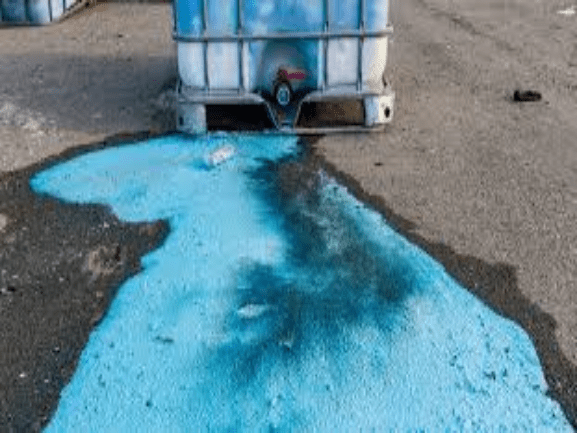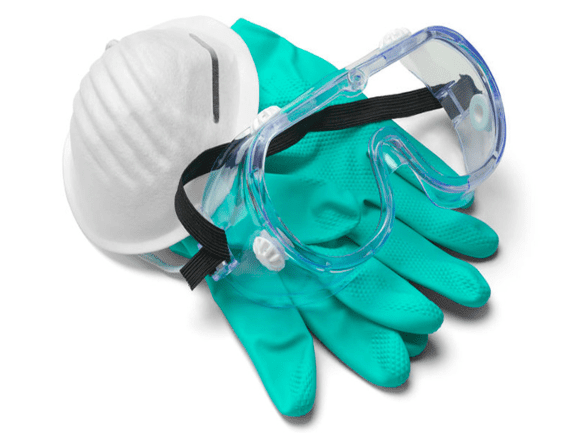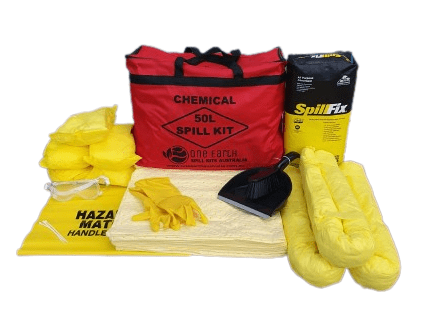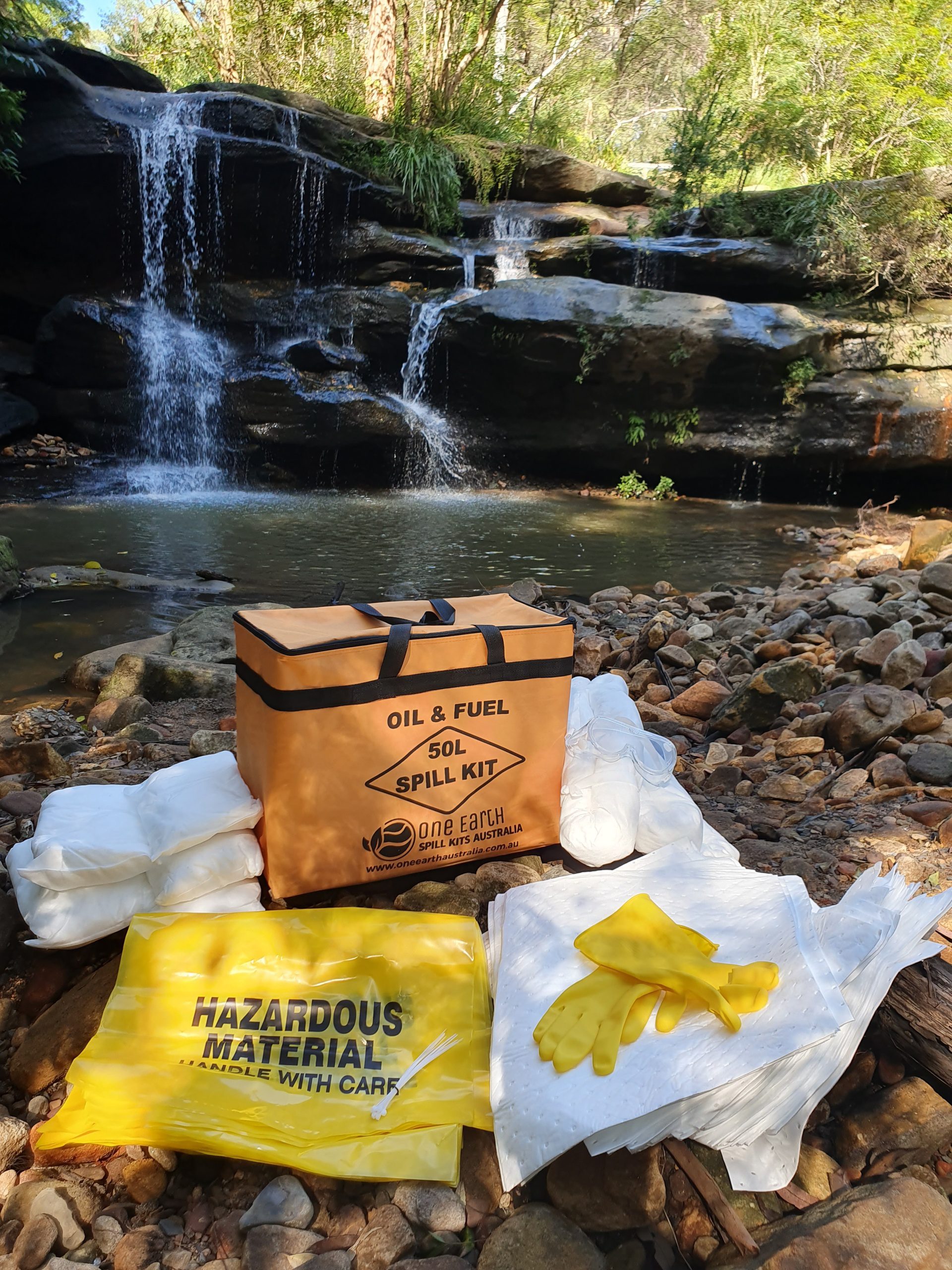The following are basic steps on how to handle a spill, but they are also general in nature, and you should formulate your own spill response plan based on your specific business with consideration to the type of possible spills at your workplace, the size of any potential spills and also what spill kits you will make available.
As soon as a spill or leak occurs, a nominated and trained team member should be informed.
Important: You should never proceed to clean up a spill if you do not know the hazards associated with the spill or if you are unsure of how to properly clean up the spill.
1. Assess the Situation and Secure the Area
The first step in the event of an emergency spill is to alert nearby people to what has happened and secure the scene to keep people from entering the area. Prevent others from coming in contact with the spill (i.e. walking through the spilled chemical). The first priority is to always protect yourself and others. You should be able to identify the substance and the volume of the spill to properly assess the risk.

IMPORTANT: If you are dealing with a major incident – think a fuel tanker involved in a major accident – then you should evacuate the area and notify local emergency services and the correct regulatory authorities.
2. Identify the Spill
Identify the spilled liquid – is it hazardous or non-hazardous? Are there any chemicals involved in the spill? If it is volatile and flammable, control all ignition sources (for example, if machinery or equipment is operating in the area, ensure they are turned off immediately) and ventilate the area as best as possible.

REMEMBER: Even a small spill of certain chemicals can result in severe burns or even asphyxiation.
3. Provide Assistance to Those Affected by the Spill
If someone has been exposed or splashed with chemicals, immediately escort them to the emergency shower or eyewash and rinse for at least 15 minutes.
Access the spill kit – the spill kit should be in good condition without any damage or missing items. It should be kept in a well-lit and easily accessible location, in a designated position within 30m of each spill risk area.
Put on personal protective equipment provided in the spill kit (for example gloves and protective eyewear) and remove contaminated clothing if necessary. If there is a fire or medical attention is required, call 000.
4. Put on Personal Protective Equipment
If you have not already done so, put on the proper personal protective equipment (PPE) such as goggles, gloves, and respirators before beginning clean up. Do not unnecessarily expose yourself to the chemical or other hazardous liquids. Even seemingly innocuous chemicals such as detergents can cause significant harm to your team if it ends up in someone’s eyes.

Personal Protective Equipment (PPE)
5. Stop the Leak and Prevent the Spill from Spreading
All spills are different – it may be a result of faulty machinery or equipment leaking, or a chemical drum that has been knocked over. Whatever the reason, it is important to stop the leak as quickly and safely as possible.
Most workplaces are designed to direct any pooling of liquids toward a storm drain. Obviously, in the case of an oil or chemical spill, this is not desirable. It can lead to chemicals impacting our natural environment and waterways.
Use absorbent material from your spill kit to protect drains or other avenues of environmental release. Absorbent booms are specifically designed to be placed around the spill to prevent the spill from flowing into drains and other waterways, as well as surrounding ecosystems.

6. Clean up the Spill
Surround and cover the spill with absorbent materials such absorbent booms, pillows, and pads. Apply enough absorbent materials to completely cover the spilled liquid. Spill pillows absorb at a high capacity for large-volume spills and constant leaks. Wait until the spilled material is absorbed. Clean up the absorbed spill with absorbent pads from the outside towards the middle.
You may also need to clean down surrounding areas, walls, or equipment to remove any residual contamination from the spill.
Collect the saturated absorbent materials and place them into disposable contaminated waste bags. Disposable contaminated waste bags are included in the spill kit. If there is broken glass use tongs to pick up the glass, not your hands.
Clean up the chemical residue with a mild detergent and water if appropriate.
Remove PPE and dispose into provided disposable bags together with the used absorbents and tie the bags. Ensure not to touch the used absorbents with your hands after removing PPE. The disposable bags should be disposed of in accordance with local, state, and national EPA regulations. The disposal will depend on the properties of the liquids. If you are unsure, there are local waste departments you can call and make an enquiry. Wash your hands well with soap and water.
REMEMBER: Under WHS Regulations, you are obliged to clean up chemical leaks and spills immediately. This also includes safely disposing of the soiled absorbents and PPE and any effluent resulting from the spillage.
7. Report the Spill
Report the spill incident to your supervisor. It is also a good idea to discuss the spill at your next team meeting whilst discussing other workplace health and safety issues to implement corrective actions and avoid any future spill incidents.
8. Restock your Spill Kit
Prepare yourself for any future spill emergencies and restock all used absorbents and PPE, or to be safe, order a new spill kit. Ensure your spill kit is placed back in the designated area. Spill events are unpredictable, so it’s important to be prepared at all times.

50L Chemical Spill Kit with Floor Sweep
This blog was aimed to give you some basic knowledge on how to most effectively use your spill kit. By providing your team with the right spill kit and training your staff in the proper use of the spill kit, you are reducing the risk of harm to your staff, your business, and the environment.





